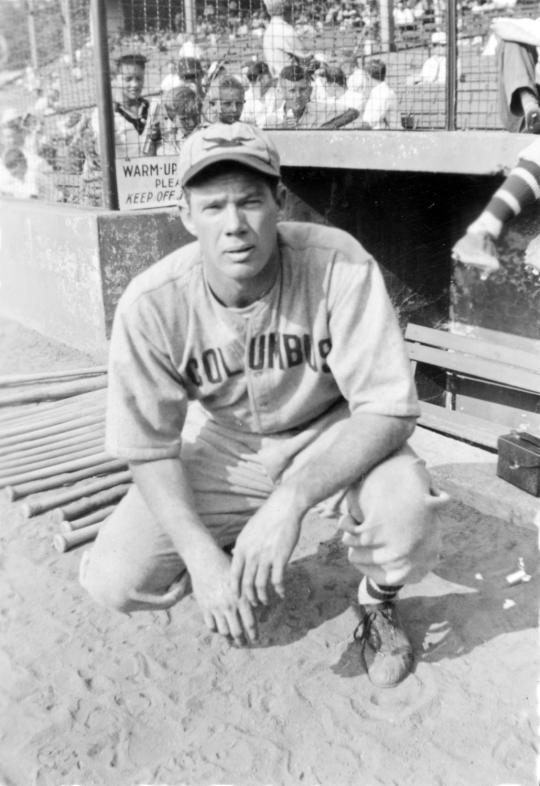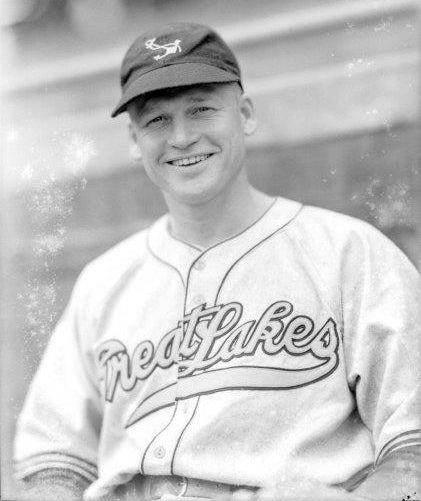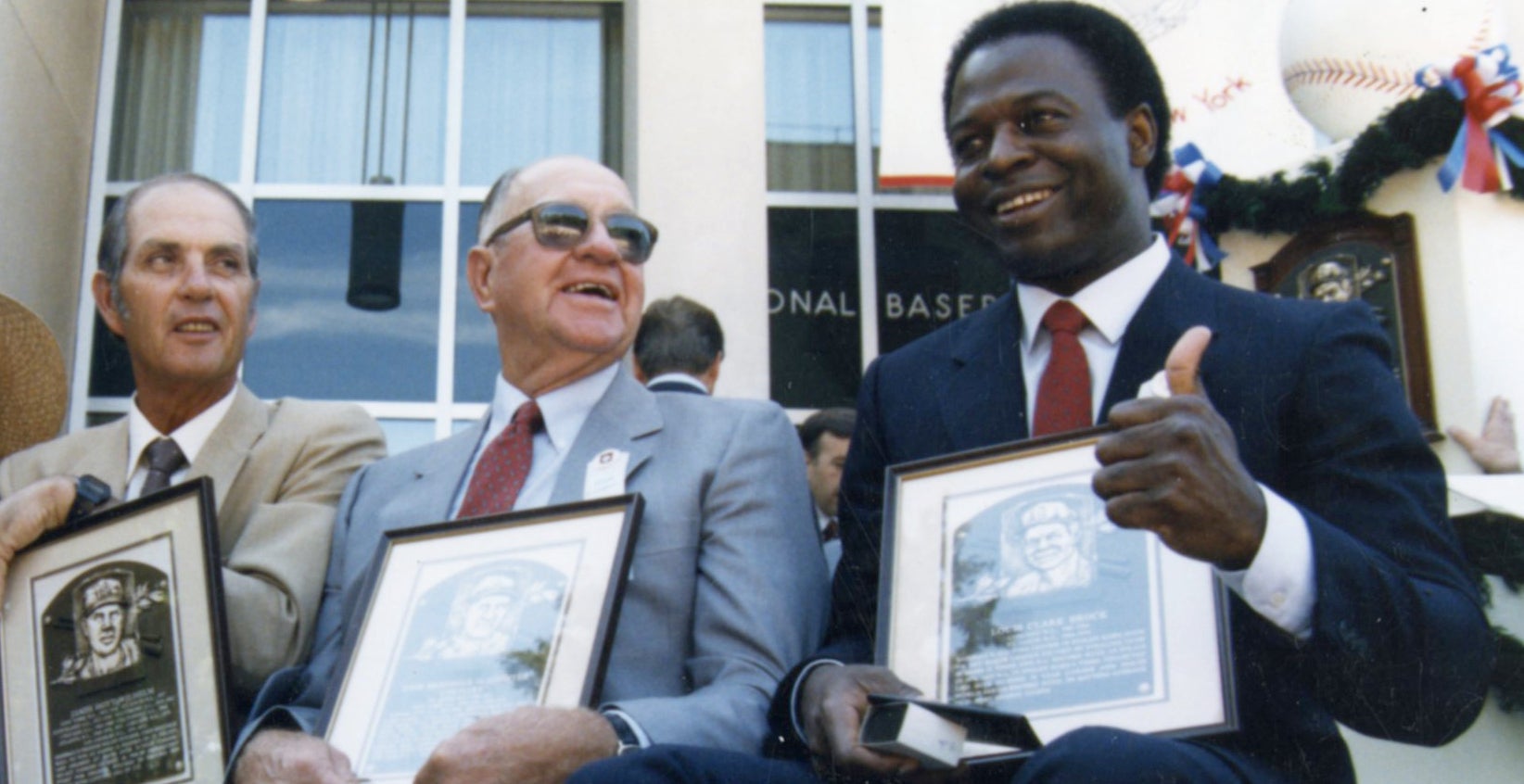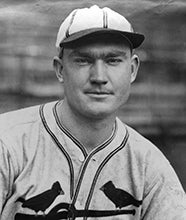- Home
- Our Stories
- Padgett catches a glimpse of history for 1939 Cardinals
Padgett catches a glimpse of history for 1939 Cardinals
The 1939 St. Louis Cardinals were an offensive juggernaut, with a lineup led by future Hall of Famers like Joe Medwick, Johnny Mize and Enos Slaughter.
But it was a little-known backup catcher, Don Padgett, who led the way and ultimately set a still-unbroken big league mark.
Hall of Fame Membership
There is no simpler, and more essential, way to demonstrate your support than to sign on as a Museum Member.
Official Hall of Fame Apparel
Proceeds from online store purchases help support our mission to preserve baseball history. Thank you!
The 1939 Cards led the big leagues with a .294 average, far outdistancing the National League runner-up Cincinnati’ .278 batting mark. Despite this offensive might, St. Louis’ 92-61 record was only good for second place, as the Reds took the pennant with 97 wins.
The Redbirds’ Hal of Fame trio each finished in the Top 10 of the NL batting race that year, with Mize leading the loop with a .349 mark, Medwick the third-place finisher at .332 and Slaughter eighth at .320.
But Padgett ended the ’39 campaign with a remarkable .399 batting average, though it came in only 92 games –including 61 as a backstop. No other catcher in the modern era (post 1900) has hit at high as .370 in while appearing in at least 40 games behind the plate in any single season.
Later a Navy veteran of World War II, Padgett served as company commander at the Great Lakes (Ill.) Training Center, and served in the South Pacific. The Hall of Fame has in its Dean O. Cochran, Jr. Photograph Archives a black-and-white negative of a smiling Padgett decked out in his Great Lakes baseball uniform. The image, taken be esteemed Chicago-based photographer George Burke, is one of thousands available in the Cochran Archive made by Burke and George Brace between 1929 and approximately 1951.
What made Padgett’s 1939 season even more exceptional was the fact that that Cardinals were attempting to convert the former outfielder to catcher – though he had never caught prior to that time.
“I’d say,” said Cardinals manager Ray Blades in July 1939, “that Don really has made progress. He has become a good receiver and he uses pretty good judgement in calling pitches. His worst drawback right now is that he doesn’t get the ball away fast enough in throwing to the bases. The reason, of course, is that he isn’t used to wearing the harness. His arm is strong enough and pretty accurate but the heavy pads are cumbersome and annoying to one who once was an outfielder.”
A still-surprised Padgett would later explain to the Sporting News that two days after Christmas, on Dec. 27, 1937, a box arrived at his North Carolina home from Cardinals general manager Branch Rickey that included four catcher’s mitts, a catcher’s mask, a chest protector and shin guards.
The next day a bewildered Padgett received a letter from Rickey informing him he would be attempting to become a catcher the following spring.
“We’ve got more outfielders than we need … Unless you turn to catching, I’m afraid we’ll have to send you back to Columbus. But you’re going to be a catcher – a great catcher.”
Despite his struggles adapting to the tools of ignorance, Padgett was always able to wield a potent bat from the left side of the plate. The husky redhead, known for being genial and affable, broke into the big leagues in 1937 with a .314 batting average, 10 home runs and 74 RBI, then followed it up by hitting .271 with eight homers and 65 runs knocked in.
With expectations that Padgett would by the starting catcher in 1939, as the Cards wanted more offense out of the catching position and Slaughter was coming up from the minors to play the outfield, a mid-March injury forestalled those plans for a while. Padgett suffered a dislocated left shoulder as he slipped and fell rounding second base in a Spring Training exhibition against the Reds and would be lost to his club for a month.
But when Padgett, 27, returned to the regular season lineup he made up for lost time. Despite losing the starting catcher job to Mickey Owen – infamous a few seasons later for his dropped third strike for the Brooklyn Dodgers in the 1941 World Series – Padgett’s batting average crept over .400 in mid-June and remained there pretty much until the end of the season.
By early August, newspapers across the country were reporting National League managers’ bewilderment as to why the Cardinals did not play Padgett – who was batting well over .400 in a part-time role behind the plate at the time – more often back in the outfield.
“Padgett is too much for us,” said New York Giants manager Bill Terry.
“We can handle Joe Medwick pretty well this year and Johnny Mize hurts us like he always did. But Padgett gives us the worst time of all. Early in the season I had my pitchers throwing fastballs to Padgett. We had to stop that before somebody was killed by the line drives he hit.
“During our last visit in St. Louis we talked it over and I finally said, ‘Pitch him curveballs. Make him hit a curve.’ Padgett came up to pinch hit with the bases full and we threw him curves. On about the second one he decided to swing. And although it was a good curve, he hit it clear over the right field pavilion. Now we’ll throw him slow stuff. At least he’ll have to use his own power to get distance.”
Prior to the start of the 1939 World Series, pitcher and NL MVP Bucky Walters of the Reds, who led his team to the Senior Circuit pennant with a 27-11 record, said of Padgett: “He’s one guy who made it hard for me. I was wrong most every time I pitched. Padgett made me more uncomfortable than did his teammates, Johnny Mize, Joe Medwick and Enos Slaughter.”
Don Padgett spent parts of the 1935 and 1936 seasons with Double-A Columbus of the American Association. After changing positions and becoming a catcher, Padgett finished the 1939 season with an astounding .399 average - a record for catchers in the modern era with at least 40 games behind the plate. . (National Baseball Hall of Fame and Museum)
With the season coming to an end, Padgett dipped below .400 for the first time in months when he went 1-for-4 on Sept. 28. On the penultimate day of the regular season, Padgett didn’t play in either game of a doubleheader. Then, in the Cardinals’ final game of the 1939 regular season on Oct. 1, Padgett, with a .399 batting average, walked in a pinch-hitting appearance, dashing any hopes of ending his noteworthy year with the coveted .400 milestone.
If Padgett had played in eight more games in 1939 he would have qualified for the batting crown, which was then based on participation in 100 or more contests.
Padgett later went into the Navy in 1942 and missed four years of baseball while in the military.
“I did virtually all my work at submarine bases, and they stretched from New Guinea to Australia, to the Admiralties, to the Philippines,” Padgett explained later. “After I had my training in the United States, I was shipped to New Guinea at a time when things were a bit rough in that part of the world. We were getting into stride.
“I spent 10 months at Brisbane, Australia, where the folks were real friendly, and they knew just a little about baseball. Where they were baseball daffy was in the Philippines. I had quite a stretch around Luzon. Altogether, my overseas service lasted 21 months.”
Padgett’s spent eight years in the big leagues (1937-41, 1946-48) spending time with the Cardinals, Brooklyn Dodgers, Boston Braves and Philadelphia Phillies, his career ending with a .288 batting average.
Padgett died on Dec, 2, 1980 at the age of 68 in High Point, N.C.
Bill Francis is the senior research and writing specialist at the National Baseball Hall of Fame and Museum










